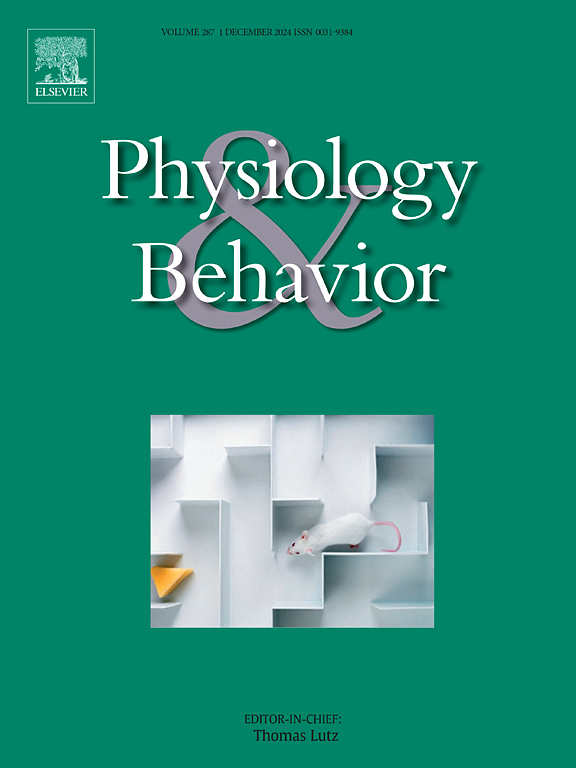Women have the power: When motor efficiency makes the difference in older individuals of the sardinian blue zone
IF 2.4
3区 医学
Q2 BEHAVIORAL SCIENCES
引用次数: 0
Abstract
This study was mainly aimed at exploring the effect of gender on the patterns of Physical Activty (PA) in older people living in an area of exceptional longevity, the so-called Sardinian Blue Zone. Furthermore, the study intended to investigate the nature of the relationships among PA metrics, cognitive measures, and age. One hundred and nine community-dwelling participants (Mage = 81.7 years old, SD = 8.1 years) completed a battery of cognitive tests (i.e., Mini-Mental State Examination and Trail Making Test) and were provided a wearable accelerometer to collect data for 7 consecutive days about amount and intensity of the performed PA on a daily basis. A series of Analyses of Covariance was conducted to examine the impact of gender on PA variables, whereas the global cognitive functioning measure was used as a covariate. Thus, it was found that women outperformed men in terms of a more active lifestyle, as indicated by the significantly reduced sedentary behavior and increased percentage of time spent in PA of moderate to vigorous intensity (MVPA). Moreover, significant associations were found among age, PA, and cognitive measures. Finally, global cognitive functioning was significantly associated with MVPA and overall accelerometric counts, as well as significant relationships were found between time spent in sedentary behavior and MVPA, accelerometric counts, speed of processing, and cognitive flexibility, respectively. Overall, these outcomes suggest that older individuals, especially women, exhibiting more preserved cognitive efficiency also reported superior levels of PA. Therefore, the promotion of a more active lifestyle is essential to achieve better functional and cognitive health in late adulthood.
女性拥有力量:当运动效率对撒丁岛蓝区老年人产生影响时。
这项研究的主要目的是探索性别对生活在所谓的撒丁岛蓝区特别长寿地区的老年人的体育活动模式(PA)的影响。此外,本研究旨在探讨PA指标、认知测量和年龄之间关系的本质。109名社区居民参与者(Mage = 81.7岁,SD = 8.1岁)完成了一系列认知测试(即迷你精神状态检查和轨迹测试),并提供了一个可穿戴加速度计,连续7天收集每天执行PA的数量和强度的数据。我们进行了一系列的协方差分析,以检验性别对PA变量的影响,而全球认知功能测量被用作协变量。因此,研究发现,在更积极的生活方式方面,女性的表现优于男性,这一点可以从久坐行为的显著减少和中强度到高强度运动(MVPA)的时间百分比的增加中看出。此外,发现年龄、PA和认知测量之间存在显著关联。最后,整体认知功能与MVPA和整体加速度计计数显著相关,并且发现久坐行为时间与MVPA、加速度计计数、处理速度和认知灵活性之间分别存在显著关系。总的来说,这些结果表明,老年人,尤其是女性,表现出更多的认知效率,也报告了更高水平的PA。因此,促进更积极的生活方式对于在成年后期实现更好的功能和认知健康至关重要。
本文章由计算机程序翻译,如有差异,请以英文原文为准。
求助全文
约1分钟内获得全文
求助全文
来源期刊

Physiology & Behavior
医学-行为科学
CiteScore
5.70
自引率
3.40%
发文量
274
审稿时长
47 days
期刊介绍:
Physiology & Behavior is aimed at the causal physiological mechanisms of behavior and its modulation by environmental factors. The journal invites original reports in the broad area of behavioral and cognitive neuroscience, in which at least one variable is physiological and the primary emphasis and theoretical context are behavioral. The range of subjects includes behavioral neuroendocrinology, psychoneuroimmunology, learning and memory, ingestion, social behavior, and studies related to the mechanisms of psychopathology. Contemporary reviews and theoretical articles are welcomed and the Editors invite such proposals from interested authors.
 求助内容:
求助内容: 应助结果提醒方式:
应助结果提醒方式:


